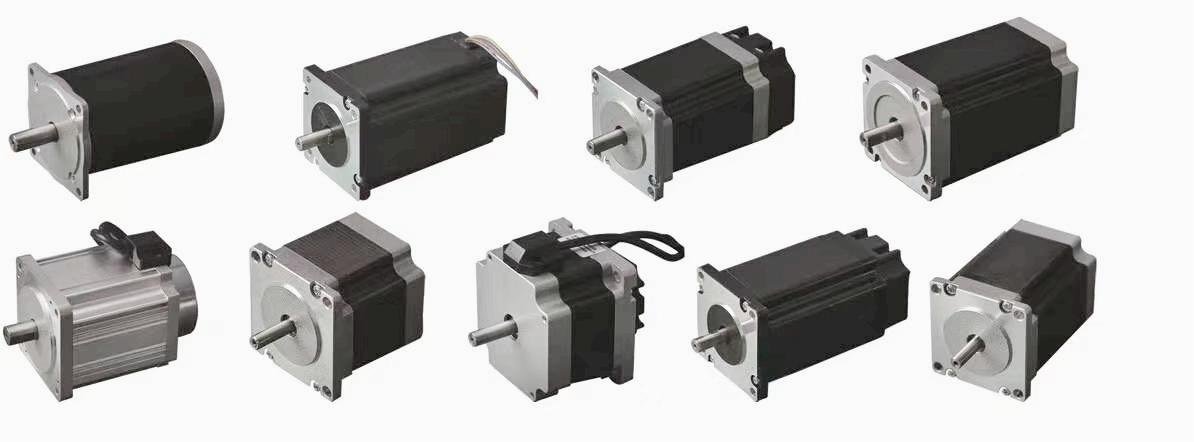Stepper motor and servo motor these two motors are very different in operation principle, stepper motor is the electrical pulse signal into angular displacement or linear displacement of the open-loop control element stepper motor parts, while the servo mainly relies on the pulse to position, the servo motor itself has the function of sending out pulses, so the servo motor each rotation of an angle will send out the corresponding number of pulses, so that and the servo motor to accept the pulse formed an echo, or closed loop, so that the system will be clear how many pulses sent and received how many pulses back so that it can accurately control the rotation of the motor to achieve accurate positioning.
The accuracy of the stepper motor is generally achieved by the precise control of step Angle, step Angle has a variety of different subdivision gear, and can achieve accurate control, and the control accuracy of the servo motor is guaranteed by the rotary encoder at the back of the motor shaft, the general control accuracy of a servo motor is higher than that of stepper motor
Stepper motor at low speed when it’s easy to have a low-frequency vibration, so when the stepper motor work at low speed, usually using damping technology was needed to overcome the low-frequency vibration phenomenon, such as a damper on the motor or drive the segmentation technology, etc., while the servo motor without the occurrence of this phenomenon, the characteristics of the closed-loop control determine the keep good performance in high speed The torque frequency characteristics of the two are different, the rated speed of the general servo motor is greater than that of the stepping motor. The output torque of the stepping motor will decrease with the increase of the speed, while the servo motor is the constant torque output, so the stepping motor generally has no overload capacity, while the AC servo motor has a strong overload capacity
Stepper motor is generally open-loop control, in the case of high starting frequency or excessive load will appear out of step or blocked phenomenon, so it is necessary to deal with the speed problem or increase the closed-loop control of the encoder. The servo motor adopts closed-loop control, which is easier to control and there is no out-of-step phenomenon.
Stepper motor has advantages in cost performance. To achieve the same function, the price of the servo motor is greater than that of the stepper motor with the same power. The advantages of high response, high speed, and high precision of the servo motor determine the high price of the product, which is inevitable. To sum up, there are great differences between the stepper motor and servo motor in terms of working principle, control accuracy, overload capacity, operation performance, and cost. However, both of them have their own advantages. If users want to make a choice between them, they need to combine their actual needs and application scenarios.

